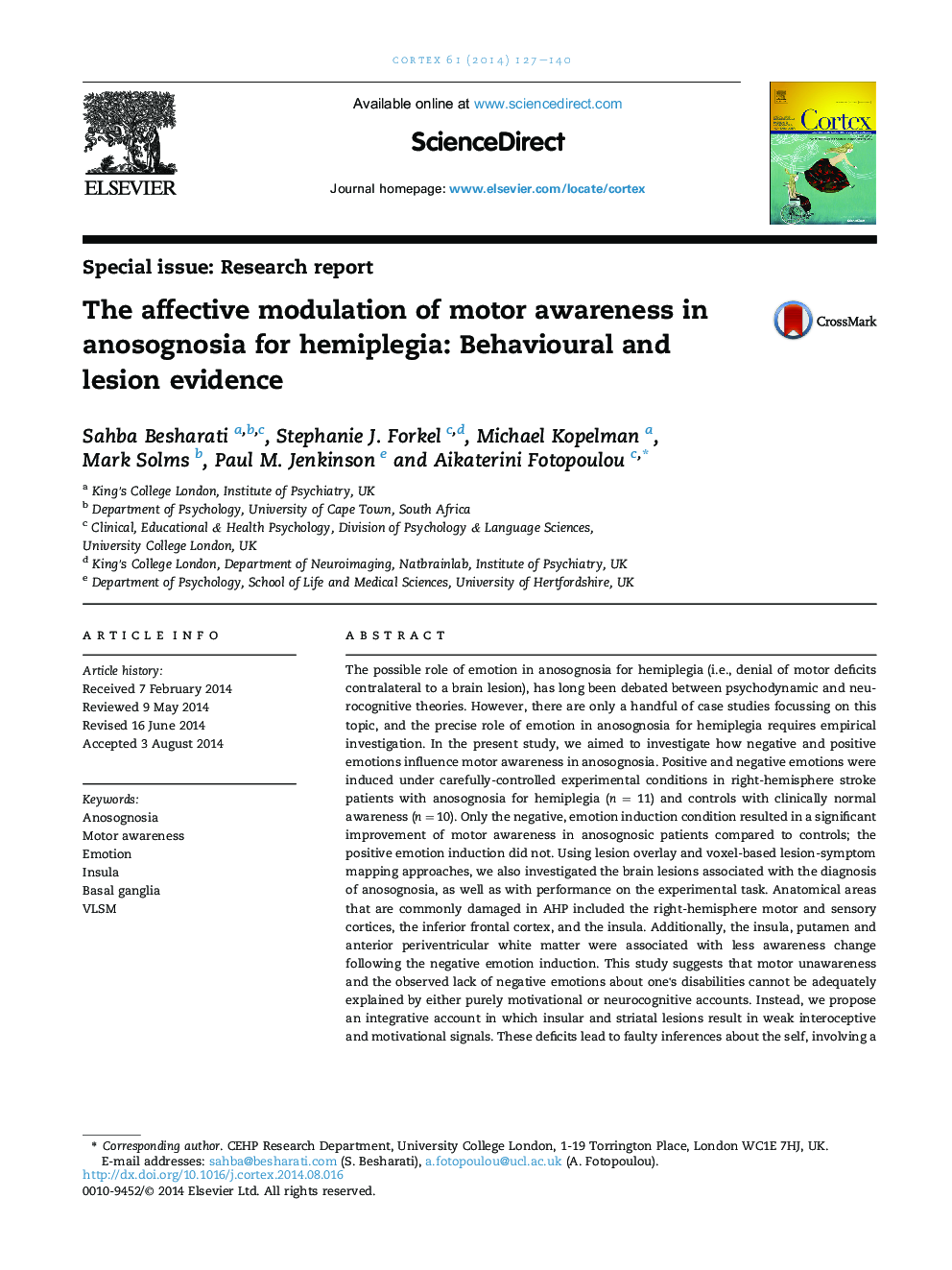| کد مقاله | کد نشریه | سال انتشار | مقاله انگلیسی | نسخه تمام متن |
|---|---|---|---|---|
| 7315054 | 1475471 | 2014 | 14 صفحه PDF | دانلود رایگان |
عنوان انگلیسی مقاله ISI
The affective modulation of motor awareness in anosognosia for hemiplegia: Behavioural and lesion evidence
ترجمه فارسی عنوان
مدولاسیون عاطفی از آگاهی موتور در آنزونگوزیا برای همی پلژی: شواهد رفتاری و ضایعه
دانلود مقاله + سفارش ترجمه
دانلود مقاله ISI انگلیسی
رایگان برای ایرانیان
کلمات کلیدی
موضوعات مرتبط
علوم زیستی و بیوفناوری
علم عصب شناسی
علوم اعصاب رفتاری
چکیده انگلیسی
The possible role of emotion in anosognosia for hemiplegia (i.e., denial of motor deficits contralateral to a brain lesion), has long been debated between psychodynamic and neurocognitive theories. However, there are only a handful of case studies focussing on this topic, and the precise role of emotion in anosognosia for hemiplegia requires empirical investigation. In the present study, we aimed to investigate how negative and positive emotions influence motor awareness in anosognosia. Positive and negative emotions were induced under carefully-controlled experimental conditions in right-hemisphere stroke patients with anosognosia for hemiplegia (n = 11) and controls with clinically normal awareness (n = 10). Only the negative, emotion induction condition resulted in a significant improvement of motor awareness in anosognosic patients compared to controls; the positive emotion induction did not. Using lesion overlay and voxel-based lesion-symptom mapping approaches, we also investigated the brain lesions associated with the diagnosis of anosognosia, as well as with performance on the experimental task. Anatomical areas that are commonly damaged in AHP included the right-hemisphere motor and sensory cortices, the inferior frontal cortex, and the insula. Additionally, the insula, putamen and anterior periventricular white matter were associated with less awareness change following the negative emotion induction. This study suggests that motor unawareness and the observed lack of negative emotions about one's disabilities cannot be adequately explained by either purely motivational or neurocognitive accounts. Instead, we propose an integrative account in which insular and striatal lesions result in weak interoceptive and motivational signals. These deficits lead to faulty inferences about the self, involving a difficulty to personalise new sensorimotor information, and an abnormal adherence to premorbid beliefs about the body.
ناشر
Database: Elsevier - ScienceDirect (ساینس دایرکت)
Journal: Cortex - Volume 61, December 2014, Pages 127-140
Journal: Cortex - Volume 61, December 2014, Pages 127-140
نویسندگان
Sahba Besharati, Stephanie J. Forkel, Michael Kopelman, Mark Solms, Paul M. Jenkinson, Aikaterini Fotopoulou,
